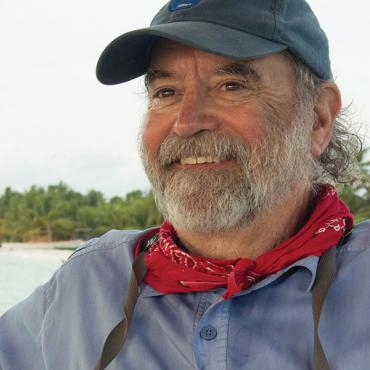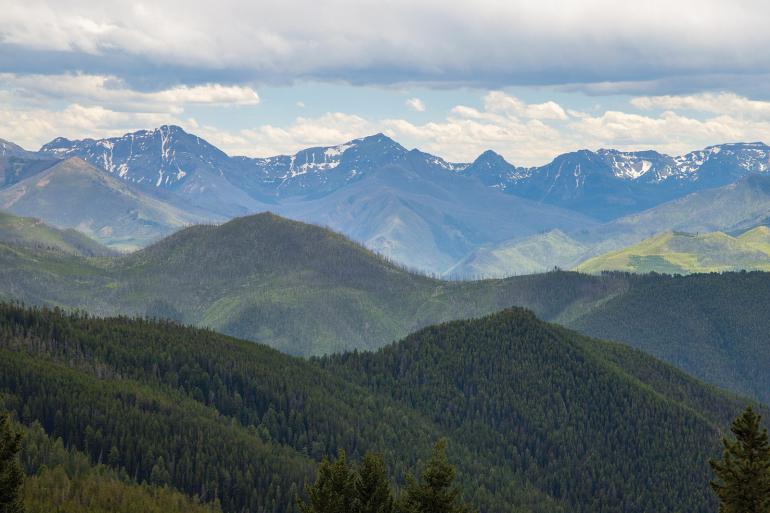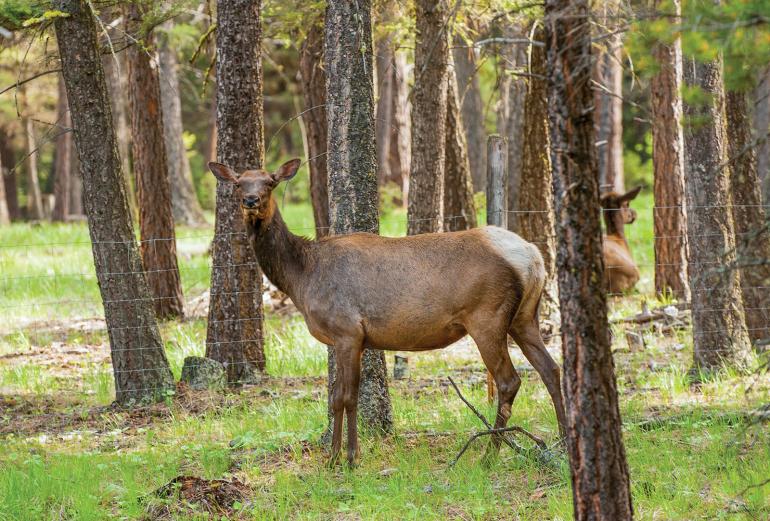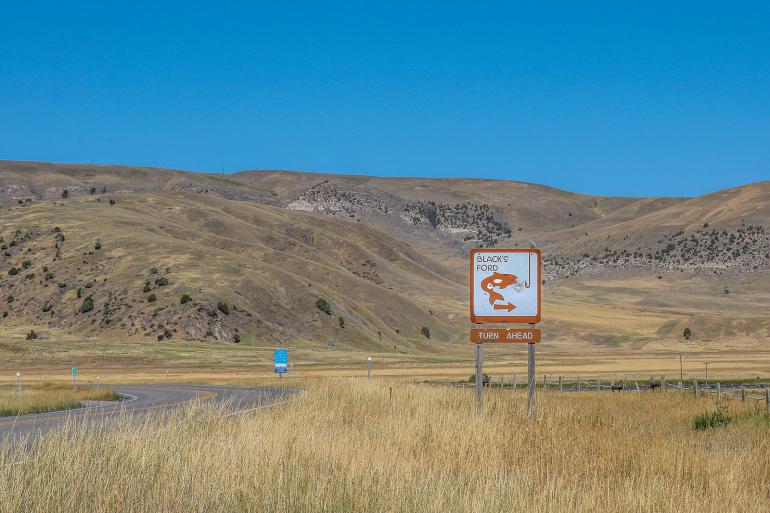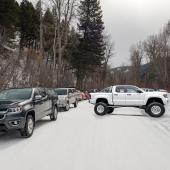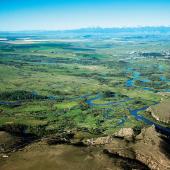News & Notes: Summer 2024
BOZEMAN TO BELGRADE TRAIL
by Fischer Genau
A shared-use path from Bozeman to Belgrade—which first secured funding in 2020—is now roughly slated for completion in 2029. A “feasibility study,” initially scheduled to be completed in 2022, is still underway. Eventually, the city hopes to enter a design phase, which would include acquiring easements for properties along the proposed pathway. To help with the initiative, the city commission recently allocated another $500,000 for design and right-of-way acquisition. But actually implementing the project will cost much, much more. To help offset costs, the city hopes to coincide the project with a sewer-reconstruction effort already planned for a similar area. Once complete, the ten-foot-wide path will travel along Frontage Road toward Belgrade, and provide a continuous bike lane from 7th to Jackrabbit. With any luck, the airport will install some indoor bike racks, to offer residents a pleasant 10-mile ride and help alleviate the current parking-lot madness.
POISON PILL FOR HUNTERS
by Don Thomas
While November is still a ways out, there’s a proposed ballot initiative that all hunters in Montana should be aware of: I-193. Yet to be approved for the ballot, the initiative arose from a dispute between two non-tribal landowners on the Flathead Reservation and the Confederated Salish and Kootenai Tribes (CSKT). Longstanding precedent and treaty rights provide CSKT with authority to regulate hunting on the reservation, which precludes big-game hunting by non-tribal members. The landowners argue that their private property rights should allow them to hunt on their own property in accordance with Montana, rather than tribal, regulations. After unsuccessful attempts to address the conflict in the legislature, the landowners and their supporters drafted I-193.
Unsurprisingly, CSKT is strongly opposed to the initiative on the grounds that it would undermine the established principle of tribal sovereignty. Game management is their prerogative by treaty rights, and there have been more than enough treaties broken. Tribal members and other opponents also point out that passage of I-193 would inevitably lead to long, expensive rounds of litigation and threaten cooperative agreements already in place between the tribes and Montana Fish, Wildlife & Parks.
I’ve been involved in Montana wildlife politics long enough to make searching for hidden agendas reflexive. Proponents of the initiative have framed their argument as a matter of property rights, which I’m all for (who isn’t?). However, there is more at stake. I would draw readers’ (and voters’) attention to the wording. The initiative, if passed, “…prohibits hunting regulations that would impose or effect a prohibition on a landowner hunting deer, elk, or black bear on a landowner’s private property during a statewide general season.”
I interpret this to mean that a wealthy non-resident landowner would no longer be required to draw a permit to hunt during the general season in permit-only hunting districts. While this would only apply to hunts conducted on the owner’s property, many of the trophy elk ranches recently sold to non-residents in permit-only districts encompass tens of thousands of acres. Would these expanded privileges extend to family members? If the property is owned by a corporation, how many people would get to exploit this loophole? There are plenty of details in which to find the devil.
Within the last few years, a combination of money and political influence has already allowed out-of-state billionaires too many opportunities to circumvent long-established hunting regulations. Passage of I-193 would open the floodgates. Pay attention, and vote NO if it makes it to the ballot. Better yet, don’t sign the petition to place it on the ballot.
PROTECTION PROPOSAL
by Don Thomas
Hunters, anglers, and other outdoor enthusiasts around the West are growing increasingly angry about the lack of access to the nine million acres of public lands surrounded by private property. Even worse, the toxic idea of selling public lands to private entities continues to circulate in some political circles. Such land disposals would have a devastating effect on all of us who recreate on those public lands that we can access currently.
That’s why we all should start paying attention to a new proposal from the House of Representatives in Washington, co-sponsored by Rep. Gabe Vasquez (D-NM) and Ryan Zinke (R-MT). The Public Lands in Public Hands Act would, in brief, require congressional approval for the sale of accessible federal land tracts greater than 300 acres, or five acres if that access is by waterway. While this bill would not directly address the access problem outlined above, it could prevent something even worse.
“Preventing publicly accessible lands managed by the Department of the Interior or USDA Forest Service from being sold or transferred is a straightforward and commonsense policy supported by hunters and anglers not just in Montana, but across the United States,” notes John Sullivan III of Backcountry Hunters & Anglers, Montana Chapter. “Passing this legislation into law would strengthen the integrity of our public-land estate and make it more difficult to sell or transfer these invaluable places.” In addition to the BHA, the bill has already drawn support from other public-land-advocacy groups including the Rocky Mountain Elk Foundation, Trout Unlimited, and the Theodore Roosevelt Conservation Partnership.
However, critics note that the bill’s wording includes a substantial list of exceptions. They also question Zinke’s past history on public-land issues and suggest that the bill represents election-year posturing. Its wording specifically does not address the important issue of “corner crossing” between adjacent tracts of public land. The proposed bill has a long way to go before becoming law and has yet to be assigned to a committee. While the bipartisan sponsorship is noteworthy, supporters will need to monitor amendments and the fine print as the bill grinds its way through our dysfunctional legislative process.
BOOMING BUSINESS
by Marne Hayes
When Business for Montana’s Outdoors was established more than a decade ago, it was just a handful of companies discussing an economic report on the state of the West. The group looked at what areas did the best job of protecting public lands, and how that influenced healthy community growth metrics like per capita income, job opportunities, and economic development.
The short story is, Montana businesses had a lot to say, and found a great deal of value in being invited to a seat at the table when issues related to public lands, recreation access, healthy habitats, and clean water were on the agenda. Those outside of the “usual suspect” industries found that their input and their reliance on healthy landscapes held a lot of leverage in influencing the programs and policies that protect Montana’s outdoors and outdoor way of life.
Fast forward, and today Business for Montana’s Outdoors is a statewide coalition of roughly 250 diverse businesses that have created a collaborative platform in the state. Their recent successes include helping to secure funding for the Land and Water Conservation Fund in perpetuity, stopping a mining operation on the border of Yellowstone National Park, advancing federal policy like the Blackfoot Clearwater Stewardship Act, and supporting the recent acquisition of new public-land access along the lower Yellowstone River. With ever-growing awareness, the organization will continue to advocate for Montana’s greatest assets: public land and water. To learn more, visit businessformontanasoutdoors.com.
PAY TO PLAY
by Eli Fournier
Beginning this year, anyone using state lands, including Fishing Access Sites, Wildlife Management Areas, and state trust lands, are required to purchase a conservation license. While most hunters and anglers are used to purchasing one with their hunting or fishing licenses, the new regulation should be of particular note to recreational boaters. Anyone hopping in the Madison for an inner-tube float to Damselfly to Black’s Ford will now need the license. Likewise for an evening bird-watching walk at Axtell Bridge. The license costs $8 for residents and $10 for nonresidents, with proceeds going back to maintenance, upkeep, and conservation of the state resources we all love to use. Purchase one at fwp.mt.gov.


